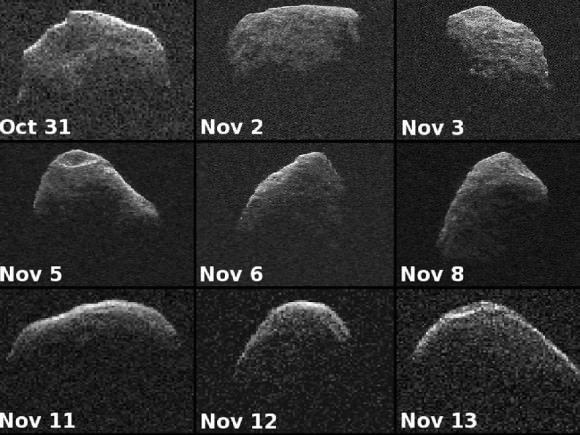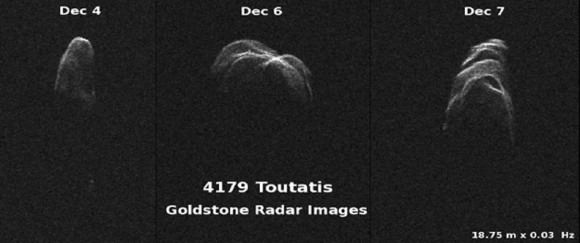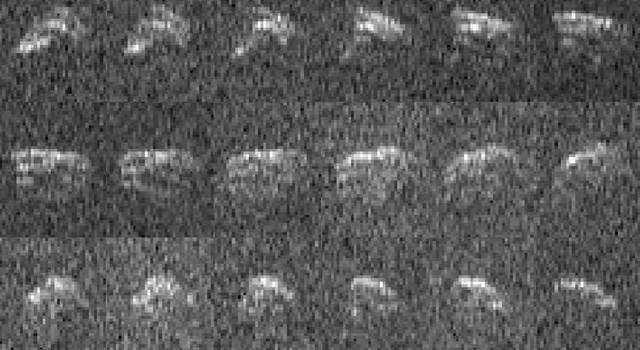Another space rock sat pretty for NASA’s big dish photographer. The 70-meter (230-feet) Goldstone antenna zinged radio waves at 2013 ET on March 10 when the asteroid flew by Earth at 2.9 lunar distances or about 693,000 miles (1.1 million km).
By studying the returned echoes, astronomers pieced together 18 images of a rugged, irregular-shaped object about 130 feet (40 m) across. Radar measurements of an asteroid’s distance and speed nail down its orbit with great accuracy, enabling scientists to predict whether or not it might become a danger to the planet at a future date.

It’s also the only way outside of a sending a spacecraft to the object of seeing a small asteroid’s shape and surface features. Most optical telescopes cannot resolve asteroids as anything more than points of light.
By convention, radar images appear “lit” from above. That’s the side closest to the antenna. As you examine a radar image from top to bottom, distance from the antenna increases and the asteroid fades. If the equator of the asteroid faces the antenna, it will appear brightly illuminated at the top of the image. If the antenna faces one of the poles, the pole will be on top and lit up. It takes a bit of getting used to.

The asteroid’s width in the images depends on the asteroid’s rotation rate and the antenna’s perspective. If the antenna stares directly down over the equator and the asteroid rotates rapidly, the images will be stretched from Doppler-shifting of the returned radar echo.
Radio waves are a form of light just like the familiar colors of the rainbow. If radio light is moving toward you, its waves bunch together more tightly and appear slightly bluer than if they were at rest. Astronomers call this a Doppler shift or blueshift. If they’re moving away, the light waves get stretched and become “redshifted”.

A slow-rotating asteroid will appear narrower to radar eyes, and if it doesn’t rotate at all, will show up as a “spike” of light. When the antenna happens to be point directly at a pole, the asteroid will appear to be rotating neither toward nor away from the observer and also look like a spike.
Most asteroids fall somewhere in between, and their radar portraits are close to their true shapes. Radar images show us surface textures, shape, size, rotation rate and surface features like craters. 2013 ET joins the ranks of numerous asteroids probed by radio waves from Earth as we try to grasp the complexity of our planetary neighborhood while hoping for we don’t stare down cosmic disaster anytime soon.

